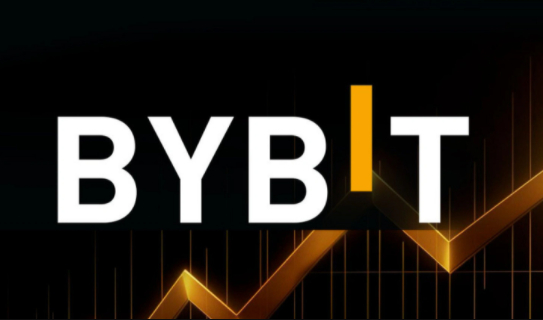-
 Bitcoin
Bitcoin $109,060.5091
-0.60% -
 Ethereum
Ethereum $2,554.0291
-1.47% -
 Tether USDt
Tether USDt $1.0003
0.00% -
 XRP
XRP $2.2391
-2.33% -
 BNB
BNB $659.7691
-0.31% -
 Solana
Solana $150.5458
-2.56% -
 USDC
USDC $1.0000
0.00% -
 TRON
TRON $0.2873
1.05% -
 Dogecoin
Dogecoin $0.1669
-3.75% -
 Cardano
Cardano $0.5827
-3.21% -
 Hyperliquid
Hyperliquid $38.9857
-3.92% -
 Sui
Sui $2.9281
-3.02% -
 Bitcoin Cash
Bitcoin Cash $482.7177
-4.36% -
 Chainlink
Chainlink $13.3876
-2.65% -
 UNUS SED LEO
UNUS SED LEO $9.0546
0.46% -
 Avalanche
Avalanche $18.1281
-3.21% -
 Stellar
Stellar $0.2404
-1.65% -
 Toncoin
Toncoin $2.8065
-2.82% -
 Shiba Inu
Shiba Inu $0.0...01158
-2.97% -
 Litecoin
Litecoin $88.4252
-2.90% -
 Hedera
Hedera $0.1559
-2.34% -
 Monero
Monero $319.4730
-2.17% -
 Polkadot
Polkadot $3.4421
-4.06% -
 Dai
Dai $1.0000
0.00% -
 Ethena USDe
Ethena USDe $1.0002
0.01% -
 Bitget Token
Bitget Token $4.4632
-2.78% -
 Uniswap
Uniswap $7.3746
-3.91% -
 Pepe
Pepe $0.0...09800
-6.01% -
 Aave
Aave $269.6237
-3.51% -
 Pi
Pi $0.4834
-3.35%
Can Bybit leverage be used to play leverage
Bybit leverage, when employed with sound risk management strategies, can amplify trading profits while mitigating potential losses.
Nov 14, 2024 at 01:22 pm

Can Bybit Leverage Be Used to Play Leverage? An In-Depth Guide
Introduction
Leverage trading is a double-edged sword that can magnify both profits and losses. By understanding the mechanics of leverage and employing effective risk management strategies, traders can harness its potential to enhance their trading outcomes. This article delves into the specifics of Bybit's leverage trading offering, providing a comprehensive guide to its features, benefits, and potential risks.
Understanding Bybit Leverage
- What is Leverage?
Leverage is a financial tool that allows traders to amplify their trading positions by borrowing funds from a broker. This enables them to gain exposure to larger market movements with a smaller initial investment. Bybit offers leverage ratios of up to 100x, meaning that traders can control up to $100 worth of assets for every $1 they deposit. - How to Use Bybit Leverage?
To utilize Bybit's leverage, traders must first create an account and deposit funds. They can then select the desired leverage ratio for each trade, subject to Bybit's margin requirements. Bybit provides two distinct leverage modes: Cross Leverage and Isolated Leverage. Cross Leverage allows traders to use the entire account balance as collateral, while Isolated Leverage isolates the margin used for each trade. - Types of Leverage Orders
Bybit supports a range of order types that can be used in conjunction with leverage, including Market Orders, Limit Orders, Stop Orders, and Take Profit Orders. Market Orders execute at the current market price, while Limit Orders are triggered when the market price reaches a specified level. Stop Orders are used to close a position at a predetermined price, and Take Profit Orders automatically sell a position when a target profit level is reached.
Benefits of Bybit Leverage
- Increased Trading Power: Leverage empowers traders to magnify their profit potential by accessing larger market positions. This can be particularly beneficial when trading volatile assets or during periods of high market uncertainty.
- Margin Efficiency: Bybit's Cross Leverage mode allows traders to allocate their margin across multiple positions, maximizing capital efficiency. This enables them to trade a wider range of assets with limited capital.
- Hedge Against Risk: Leverage can also be used as a hedging tool. Traders can create opposite positions on the same asset, using leverage to offset potential losses and protect their capital.
Risks of Bybit Leverage
- Magnified Losses: Leverage is a double-edged sword, multiplying both profits and losses. If the market moves against their position, traders may incur significant losses that exceed their initial investment.
- Margin Calls: Bybit employs a margin call system to prevent excessive losses. If the trader's margin balance falls below a certain threshold, Bybit will issue a margin call, forcing them to deposit additional funds or close their positions.
- Volatility Risk: Leverage trading amplifies market volatility, making positions more susceptible to rapid price swings. Traders must carefully monitor market conditions and adjust their leverage levels accordingly.
Best Practices for Bybit Leverage Trading
- Risk Management: Establish clear risk management strategies, including stop loss orders and position sizing guidelines. Limit the amount of leverage used and never risk more than you can afford to lose.
- Asset Selection: Carefully select assets to trade with leverage. Focus on instruments with manageable volatility and sufficient liquidity to avoid slippage and liquidity risks.
- Market Analysis: Conduct thorough market analysis to identify potential trading opportunities and assess overall market sentiment. Use technical indicators and fundamental news to make informed trading decisions.
- Leverage Discipline: Exercise discipline in managing leverage levels. Start with lower leverage ratios and gradually increase them as you gain experience and confidence.
- Practice and Simulation: Utilize Bybit's simulation mode or practice accounts to test trading strategies and familiarize yourself with the risks of leverage trading before committing real funds.
Conclusion
Bybit Leverage is a powerful tool that can enhance trading outcomes when used prudently. By understanding the mechanics, benefits, and risks involved, traders can leverage its potential to magnify profits while minimizing potential losses. Employing effective risk management practices, conducting thorough market analysis, and maintaining leverage discipline are essential for successful leverage trading.
Disclaimer:info@kdj.com
The information provided is not trading advice. kdj.com does not assume any responsibility for any investments made based on the information provided in this article. Cryptocurrencies are highly volatile and it is highly recommended that you invest with caution after thorough research!
If you believe that the content used on this website infringes your copyright, please contact us immediately (info@kdj.com) and we will delete it promptly.
- Bitcoin's Pattern Break: Are HODLers the Key to the Next Surge?
- 2025-07-04 18:50:12
- Bitcoin Price, Trump's Bill, and the $150K Dream: A NYC Take
- 2025-07-04 19:50:12
- Ethereum, LILPEPE, and the July Bounce: Will Pepe Steal ETH's Thunder?
- 2025-07-04 19:10:12
- Binance Institutional Loans: Unlocking 4x Leverage and Zero Interest for Whales
- 2025-07-04 19:15:12
- Bitcoin Bull Run: Analysts Eye Peak in Late 2025?
- 2025-07-04 19:20:13
- Pepe Indicators, Bullish Forecast: Can the Meme Coin Rally?
- 2025-07-04 19:25:12
Related knowledge

How to identify the contract value range in combination with the market profile?
Jul 02,2025 at 10:56pm
Understanding the Market ProfileTo effectively identify the contract value range in combination with the market profile, it's essential to first understand what each concept entails. The market profile is a framework that helps traders visualize how price and time interact across a given period, typically a trading day or session. It provides insights i...

How to use the price slope to filter the false breakthrough signal of the contract?
Jun 20,2025 at 06:56pm
Understanding the Concept of Price Slope in Contract TradingIn contract trading, especially within cryptocurrency derivatives markets, price slope refers to the rate at which the price changes over a specific time period. It helps traders assess the strength and sustainability of a trend. A steep slope may indicate strong momentum, while a shallow slope...

How to determine the expected volatility of the contract through the volatility cone?
Jun 19,2025 at 12:28pm
Understanding the Basics of Volatility in Cryptocurrency ContractsIn the realm of cryptocurrency trading, volatility is a key metric that traders use to assess potential risk and reward. When dealing with futures contracts, understanding how volatile an asset might become over time is crucial for position sizing, risk management, and strategy developmen...

How to formulate a contract intraday trading plan in combination with the pivot point system?
Jun 21,2025 at 03:42pm
Understanding the Basics of Pivot Points in Cryptocurrency TradingPivot points are technical analysis tools used by traders to identify potential support and resistance levels. These levels are calculated using the previous day's high, low, and closing prices. In the context of cryptocurrency trading, where markets operate 24/7, pivot points help trader...

How to adjust the contract position ratio through the price fluctuation entropy?
Jun 22,2025 at 11:42am
Understanding Price Fluctuation Entropy in Cryptocurrency ContractsIn the world of cryptocurrency futures trading, price fluctuation entropy is a relatively new concept used to measure market volatility and uncertainty. It derives from information theory, where entropy refers to the degree of randomness or unpredictability in a system. In crypto contrac...

How to use the volume swing indicator to predict the contract volume-price divergence?
Jun 18,2025 at 11:42pm
Understanding the Volume Swing IndicatorThe volume swing indicator is a technical analysis tool used primarily in cryptocurrency trading to evaluate changes in volume over time. Unlike price-based indicators, this metric focuses solely on trading volume, which can provide early signals about potential market reversals or continuations. The key idea behi...

How to identify the contract value range in combination with the market profile?
Jul 02,2025 at 10:56pm
Understanding the Market ProfileTo effectively identify the contract value range in combination with the market profile, it's essential to first understand what each concept entails. The market profile is a framework that helps traders visualize how price and time interact across a given period, typically a trading day or session. It provides insights i...

How to use the price slope to filter the false breakthrough signal of the contract?
Jun 20,2025 at 06:56pm
Understanding the Concept of Price Slope in Contract TradingIn contract trading, especially within cryptocurrency derivatives markets, price slope refers to the rate at which the price changes over a specific time period. It helps traders assess the strength and sustainability of a trend. A steep slope may indicate strong momentum, while a shallow slope...

How to determine the expected volatility of the contract through the volatility cone?
Jun 19,2025 at 12:28pm
Understanding the Basics of Volatility in Cryptocurrency ContractsIn the realm of cryptocurrency trading, volatility is a key metric that traders use to assess potential risk and reward. When dealing with futures contracts, understanding how volatile an asset might become over time is crucial for position sizing, risk management, and strategy developmen...

How to formulate a contract intraday trading plan in combination with the pivot point system?
Jun 21,2025 at 03:42pm
Understanding the Basics of Pivot Points in Cryptocurrency TradingPivot points are technical analysis tools used by traders to identify potential support and resistance levels. These levels are calculated using the previous day's high, low, and closing prices. In the context of cryptocurrency trading, where markets operate 24/7, pivot points help trader...

How to adjust the contract position ratio through the price fluctuation entropy?
Jun 22,2025 at 11:42am
Understanding Price Fluctuation Entropy in Cryptocurrency ContractsIn the world of cryptocurrency futures trading, price fluctuation entropy is a relatively new concept used to measure market volatility and uncertainty. It derives from information theory, where entropy refers to the degree of randomness or unpredictability in a system. In crypto contrac...

How to use the volume swing indicator to predict the contract volume-price divergence?
Jun 18,2025 at 11:42pm
Understanding the Volume Swing IndicatorThe volume swing indicator is a technical analysis tool used primarily in cryptocurrency trading to evaluate changes in volume over time. Unlike price-based indicators, this metric focuses solely on trading volume, which can provide early signals about potential market reversals or continuations. The key idea behi...
See all articles

























































































